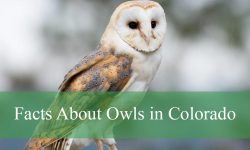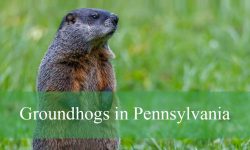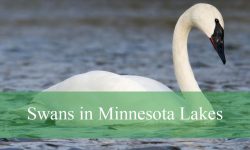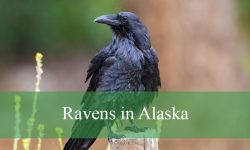At dawn, when mist still clings to the reeds of a northern Minnesota wetland, a sleek shadow slips along the water’s edge. Its movement is fluid — half cat, half fish — leaving only ripples in its wake. The creature pauses, sniffs the air, then disappears beneath the surface in a flash of brown. Meet the minks in Minnesota, elusive hunters of the marshlands and one of the state’s most underrated predators.
While beavers build, otters play, and muskrats graze, minks stalk — quiet, calculating, and endlessly curious. They are the ghosts of Minnesota’s wetlands, moving with purpose through rivers, ponds, and bogs. Yet few people ever see one, and even fewer realize the extraordinary complexity of their lives.
In this article, we uncover the hidden world of the American mink (Neogale vison) — from its surprising intelligence and hunting prowess to its vital role in Minnesota’s fragile wetland ecosystems. What you’ll learn about this semi-aquatic carnivore might just change how you view the marshes forever.
Meet Minnesota’s Mink
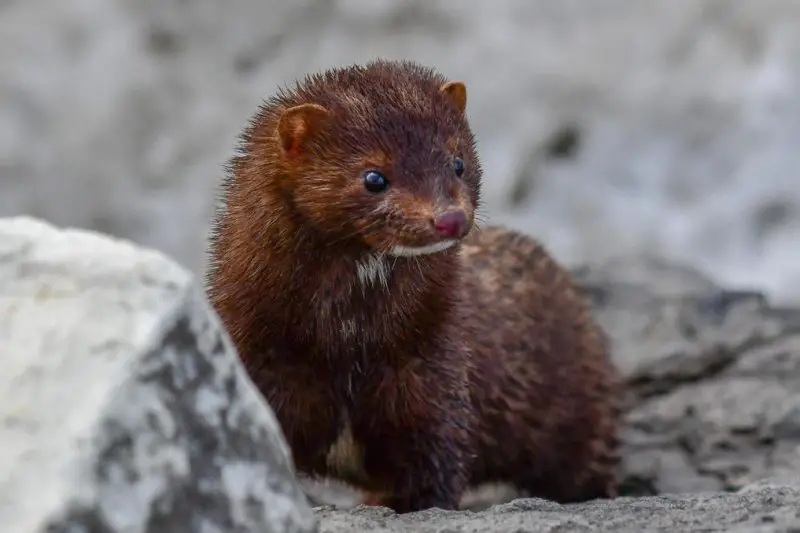
The American Mink: A Master of Two Worlds
The American mink is a small, slender member of the weasel family, related to otters, ferrets, and martens. Measuring 18–28 inches long (including its bushy tail) and weighing up to 3 pounds, the mink is built for stealth. Its body is long and flexible, with webbed feet for swimming and dense waterproof fur that keeps it warm in Minnesota’s icy waters.
Their rich, dark brown coat — sometimes nearly black — once made them targets of the fur trade. Today, they are more valued for their ecological role than for fashion. In the wild, their fur gleams with a natural sheen that repels water like polished glass, a perfect adaptation for their amphibious lifestyle.
Found throughout the state, from the wild rice marshes of northern Minnesota to the rivers of the Twin Cities metro, minks in Minnesota are year-round residents — and surprisingly active even in deep winter.
Habitat and Range
Minks thrive wherever land and water meet. They prefer wetlands with dense vegetation, fallen logs, and plenty of prey — frogs, fish, crayfish, and small mammals. These habitats offer both cover and food, making Minnesota’s wetland networks ideal.
Each mink maintains a home range along a waterway, sometimes stretching over two miles. Within that territory, it digs or occupies burrows near the water’s edge, often using old muskrat or beaver lodges for shelter.
They are solitary, secretive, and fiercely territorial. Two adults rarely share the same stretch of bank, except briefly during mating season.
Adaptations for Survival
Built for Speed and Silence
The mink’s body is an engineering marvel — narrow enough to slip into small tunnels, strong enough to swim against current, and agile enough to chase prey both on land and underwater.
When hunting, minks in Minnesota rely on stealth. They move in bursts of speed, diving beneath the surface to ambush fish or darting through tall grass after rodents. Their sharp claws and needle-like teeth deliver swift kills, ensuring efficiency over struggle.
This balance of grace and ferocity has made the mink one of Minnesota’s most successful small predators — capable of thriving in habitats that challenge even larger carnivores.
Designed for All Seasons
Minnesota winters are brutal, but minks are undeterred. Their underfur traps air close to the skin, creating insulation that stays dry even in icy water. Their metabolism runs high, requiring frequent meals — so they hunt through snow, ice, and darkness alike.
In summer, they shed into a sleeker coat, adapting to warmer temperatures while maintaining their waterproof barrier. It’s a biological wardrobe change that allows minks in Minnesota to remain active hunters 365 days a year.
Behavior and Daily Life
Solitary Wanderers
Minks are independent by nature. Each individual maintains its own hunting routes and resting spots, marking them with scent glands to warn rivals.
Unlike social species such as otters, minks live alone, avoiding others except during the brief breeding season in late winter. They are crepuscular — most active at dawn and dusk — though in remote areas, they may hunt at any hour.
Their constant movement gives them an almost restless energy, patrolling streams and marsh edges with the same intensity as a fox crossing open fields.
The Secret Life of a Hunter
A mink’s day revolves around food. These animals are opportunistic carnivores, eating whatever the landscape provides: fish, frogs, birds, eggs, crayfish, mice, and even muskrats.
They often kill more than they can eat, storing leftovers in burrows for later. This “surplus killing” may seem wasteful, but it’s insurance — vital during harsh winters when prey is scarce.
In frozen months, minks in Minnesota carve tunnels through snow and dive under ice, navigating air pockets left by beavers. They’ve been observed entering muskrat lodges through underwater entrances, taking prey in seconds — a testament to their boldness and efficiency.
The Mink’s Diet: Nature’s Perfect Predator
Aquatic Hunters
Minks are born swimmers. Their diet reflects a perfect blend of aquatic and terrestrial prey. In wetlands, they catch fish like minnows and perch, frogs, crayfish, and even snakes.
Their hunting technique is a combination of patience and speed. They watch the waterline, then dive in with precision. With webbed feet and waterproof fur, they can stay submerged for up to 30 seconds — long enough to seize unsuspecting prey.
These skills make minks in Minnesota key predators in aquatic food webs, helping to regulate species that would otherwise overpopulate.
Versatility on Land
Though they love water, minks are equally skilled hunters on land. They stalk rodents, raid bird nests, and occasionally take rabbits or voles. Their long, slender frame allows them to pursue prey into burrows and thickets other predators can’t access.
This adaptability ensures survival in changing environments — from wetlands to farm edges to forest creeks. If one food source declines, they seamlessly switch to another, maintaining ecological balance wherever they roam.
Reproduction and Family Life
The Mating Season
Minks breed once a year, typically from February to April. Males travel great distances seeking receptive females, often leaving scent trails to advertise their presence.
Courtship is brief, and after mating, the male departs. Females then experience delayed implantation — a fascinating reproductive adaptation where fertilized eggs pause development for several weeks before implanting in the uterus.
This ensures that offspring are born in late spring, when food is plentiful and temperatures mild — a perfect evolutionary strategy for life in Minnesota’s unpredictable climate.
Raising the Kits
After a gestation of about 40–75 days, the female gives birth to 4–6 kits in a grass-lined den. The newborns are blind, hairless, and entirely dependent. For the first month, the mother rarely leaves them except to hunt briefly.
By six weeks, the kits open their eyes and begin exploring. The mother teaches them to swim and hunt — skills crucial for independence. By late summer, the young disperse, each seeking its own territory along rivers and wetlands.
Through her care, a single female mink ensures the continuation of a bloodline refined by stealth, intelligence, and adaptability.
Minks and Minnesota’s Ecosystems
The Silent Regulator
As mid-level predators, minks in Minnesota are vital to ecological stability. By preying on fish, amphibians, and small mammals, they prevent overpopulation and disease outbreaks in wetland ecosystems.
Their predation on muskrats, for example, keeps marsh vegetation balanced — too many muskrats can overgraze aquatic plants. In this way, the mink indirectly maintains wetland health and biodiversity.
Their hunting also influences prey behavior, encouraging natural balance and reducing overexploitation of shared resources.
Environmental Indicators
Because minks rely on clean water and abundant prey, their presence signals a healthy ecosystem. Where minks thrive, pollution levels are low, and biodiversity is strong.
Wildlife biologists often monitor minks in Minnesota as bioindicators — living markers of environmental quality. A decline in mink populations can hint at water contamination or habitat loss long before other signs appear.
In this sense, minks are the wetlands’ quiet messengers, their survival reflecting the state of the water they hunt within.
Minks and Humans
A Complex Relationship
Minnesota’s history with minks is intertwined with the fur trade. Their luxurious pelts once drove exploration, trapping, and settlement across the region.
Today, while trapping still occurs under regulation, attitudes have shifted. People increasingly recognize minks in Minnesota for their ecological value rather than commercial worth.
They are also common subjects of wildlife photography and education — admired for their agility, curiosity, and striking beauty.
Conflicts and Coexistence
Like raccoons and foxes, minks occasionally come into conflict with humans, especially near poultry farms or fish ponds. They may raid chicken coops or koi ponds if access is easy.
However, these conflicts are manageable. Securing enclosures, using motion lights, and maintaining natural barriers reduce encounters without harming wildlife.
In truth, most minks prefer wild prey and avoid human areas unless food scarcity forces them closer to civilization.
Myths and Misunderstandings
Are Minks Dangerous?
Though fierce hunters, minks pose little threat to humans. Their aggression is defensive — a response to cornering or provocation. In the wild, they avoid contact and vanish quickly if approached.
Their sharp teeth and musky scent — released from anal glands when threatened — are their primary defenses. For the most part, minks in Minnesota are elusive neighbors, not aggressors.
Do Minks Kill for Sport?
Minks sometimes kill more prey than they immediately eat, leading to myths of “killing for fun.” In reality, this behavior is instinctual — survival insurance for leaner times.
In harsh climates like Minnesota’s, where winter food can vanish overnight, excess kills ensure future meals. What seems wasteful to humans is strategic efficiency in nature’s logic.
Are Minks the Same as Otters?
While both are semi-aquatic mustelids, minks and otters differ in size, diet, and behavior. Otters are larger, social, and primarily fish-eaters, while minks are smaller, solitary, and more versatile hunters.
They occasionally share territory but occupy distinct ecological niches — proof that even close relatives can adapt to unique roles within shared landscapes.
Conservation and Environmental Importance
Protecting Wetland Habitats
The future of minks in Minnesota depends on the preservation of wetlands — among the most endangered ecosystems in North America. Urbanization, pollution, and drainage continue to threaten these habitats.
Conservation organizations and state programs now focus on restoring marshes, improving water quality, and promoting native vegetation. Such efforts benefit not only minks but also waterfowl, amphibians, and countless other species.
Healthy wetlands mean thriving wildlife — and the mink remains one of their finest ambassadors.
Climate and Contamination Challenges
Because minks feed at the top of aquatic food chains, they are vulnerable to mercury and chemical accumulation. Pesticides and industrial runoff can poison their prey, affecting reproductive success.
Researchers use mink tissue samples to track these pollutants. By studying the health of minks in Minnesota, scientists gain insight into broader environmental threats — turning the mink into an unlikely guardian of water quality.
Surprising and Little-Known Facts About Minks in Minnesota
-
Minks can swim at speeds of 1.5 miles per hour and dive for 30 seconds.
-
Their fur is naturally oily, repelling water without external oils.
-
They communicate through chirps, growls, and hissing sounds.
-
Minks can jump up to three feet vertically when startled.
-
They use abandoned muskrat burrows as both homes and hunting grounds.
-
A single mink may consume over 1,000 prey animals annually.
-
Their whiskers detect movement underwater, helping them locate fish in darkness.
-
Minks can climb trees and raid bird nests near shorelines.
-
Each individual marks territory with musk, detectable by other minks for weeks.
-
They have excellent memory — revisiting successful hunting spots repeatedly.
FAQs About Minks in Minnesota
Are minks native to Minnesota?
Yes. Minks in Minnesota are native to the state and have lived here for thousands of years.
What do minks eat?
Fish, frogs, crayfish, small mammals, birds, and occasionally eggs — they are versatile carnivores.
Are minks active in winter?
Absolutely. They remain active all year, hunting even under snow and ice.
Do minks make good pets?
No. They are wild, solitary predators and unsuitable for domestication.
Are minks endangered in Minnesota?
No. Their populations are stable, though local declines can occur in polluted or urbanized regions.
Where can I see a mink in Minnesota?
Look along wetlands, rivers, and lakes — especially at dawn or dusk near dense vegetation.
How long do minks live?
In the wild, typically 3–4 years; in captivity, up to 10.
Do minks swim underwater?
Yes. They are powerful swimmers, capable of chasing prey beneath ice or reeds.
Are minks related to weasels?
Yes. Minks are part of the weasel family (Mustelidae), sharing traits of agility, speed, and carnivory.
How can humans help protect minks?
Support wetland conservation, reduce pesticide use, and maintain natural vegetation near waterways.
Final Thoughts
The minks of Minnesota wetlands are among nature’s most fascinating survivors — elusive yet ever-present, fierce yet graceful, solitary yet vital. They represent the perfect harmony of land and water, living proof of evolution’s artistry and adaptability.
Every ripple they make in a stream, every dive beneath the reeds, carries purpose. They keep the balance, connect ecosystems, and silently remind us that true wilderness still thrives beneath Minnesota’s open skies.
The truth about minks in Minnesota is simple yet profound: they are not just hunters but caretakers of the wetlands — reflections of the state’s wild heart, sleek and enduring, bound forever to the rhythm of water and earth.


